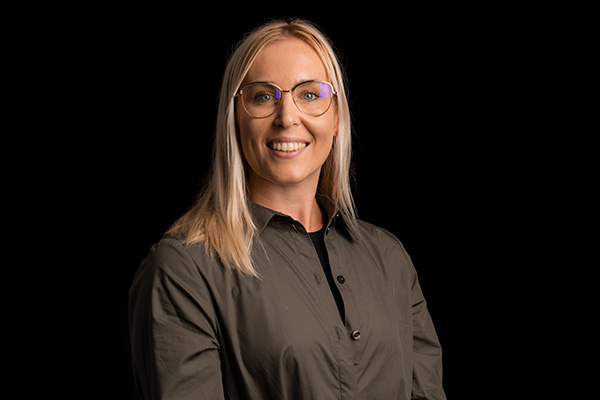Nathalie Van Den Berge
Research leader

Project title
Early identification of parkinson's disease subtypes
What is your project about?
In Parkinson's disease (PD), the pathology can propagate along the brain-body axis, affecting multiple organs along the way. Recent evidence indicates the existence of two subtypes: a body-first or a brain-first subtype. The place where the very first pathology arises (in the body (usually the gut) or in the brain), appears to determine the sequence of organs and symptoms involved during disease development. The peripheral organs are affected prior to the brain in the body-first type, and the opposite occurs in the brain-first subtype. Furthermore, the cellular environment affects the morphology of the pathology, which is associated to disease severity. And, the cellular environment in the gut is very different from the one in the brain. Hence, I hypothesize that both the location of the initial pathology and pathology morphology are interdependent determinants of the clinical and histopathological profile of PD subtypes. This hypothesis is the basis of the project, as I aim to develop animal models of body-first and brain-first PD subtypes that include the stepwise involvement of multiple organs from early to late disease stages. I will also study subtype-specific differences in the pathology morphology in easy accessible peripheral tissues or fluids to identify early disease indicators. Identification of the different PD subtypes in early stages of the disease will eventually enable personalized medicine, which will be especially beneficial in the body-first subtype where damage in the brain is still limited at early disease stages.
How did you become interested in your particular field of research?
During my education in engineering, I was always drawn to the complexity of multi-disciplinary projects, particularly the ones that involved medical sciences. There is an endless amount of unknown complexities in the field of neurosciences, as every day new questions arise about the healthy and diseased human brain. And seemingly equally fast, new techniques from biology, chemistry, physics etc. are being discovered to explore these questions better than ever. My interest to unravel the puzzle of neurodegeneration using these multi-disciplinary techniques is my motivation to pursue a career in Parkinson’s disease research.
What are the scientific challenges and perspectives in your project?
Despite rodents have been proven successful to develop symptomatic treatment for Parkinson’s disease, their physiology and anatomy is still somewhat different from humans. Hence, the biggest challenge would be to accurately mimic disease as it presents in humans by using non-human animals. Even if the animals models do not perfectly mimic human disease, this project will increase our understanding of PD subtypes and how peripheral organs are affected at early disease stages, knowledge that is desperately needed. Up to now all treatment and biomarker studies use brain-focused animal models for validation. The use of more comprehensive animal models is necessary to make sense of the complexities at play in PD subtypes, hence my models would increase translational value of biomarker and treatment validation substantially, further closing the bench-to-bedside gap in PD research.
What is your estimate of the impact, which your project may have to society in the long term?
Despite decades of PD research, there is still no cure for PD, and patients are often diagnosed in late disease stages. PD is mainly known as a disease of the brain with typical motor symptoms. However, in PD the pathology can propagate along the brain-body axis, affecting multiple organs along the way, and causing a wide range of non-motor symptoms as well. These non-motor symptoms can occur up to 20 years prior to the diagnosis, creating a large pre-motor window with opportunity to stop disease early on. That is, if we would be able to identify disease before it has destroyed the brain. However, over 99% of studies focus on modeling disease in the brain only, in the late disease stage, completely disregarding the involvement of other organs and the pre-motor phase. I believe that this suboptimal disease modeling has hampered progress to finding a cure or improve diagnosis. I expect that the outcomes of this project will provide the field with the most accurate animal models of Parkinson’s disease to date, which will allow us to progress towards earlier diagnosis and personalized treatment.
Which impact do you expect the Sapere Aude programme will have on your career as a researcher?
The Sapere Aude grant is a recognition of my decade-long hard work in neuroscience, which I am extremely grateful for. It will allow me to supplement the excellent neuroscience community in Denmark, Aarhus in particular. This prestigious grant allows me to pursue high-risk high-gain research in cooperation with my international and local collaborators, aiming to move the frontiers of science in Parkinson’s disease from a brain-only focus to a whole-body focus. Besides the already mentioned impact on society, I expect that the outcomes of this project will have a huge impact in closing the gap from bench-to-bedside in Parkinson’s disease research in Denmark and worldwide. This will substantially increase my competitiveness in attracting major European and Danish grants for supporting fundamental and translational research.
Background and personal life
I am an explorer at heart, living a life in high gear. I love to spend my free time exploring physical boundaries through gymnastics, climbing and martial arts. But my biggest passion is probably traveling and exploring different cultures through traveling, food, and friendships across the world. One of the reasons I fell in love with a career in science is the ability to have a broad international network through several research stays abroad, and the ability to work closely with different cultures. Living and working in several countries has contributed immensely to my personal growth and how I view science and this world.
View all research leaders here
Research institution
Aarhus University
Research field
Neuroscience
City of your current residence
Aarhus
High school
Ghent University
